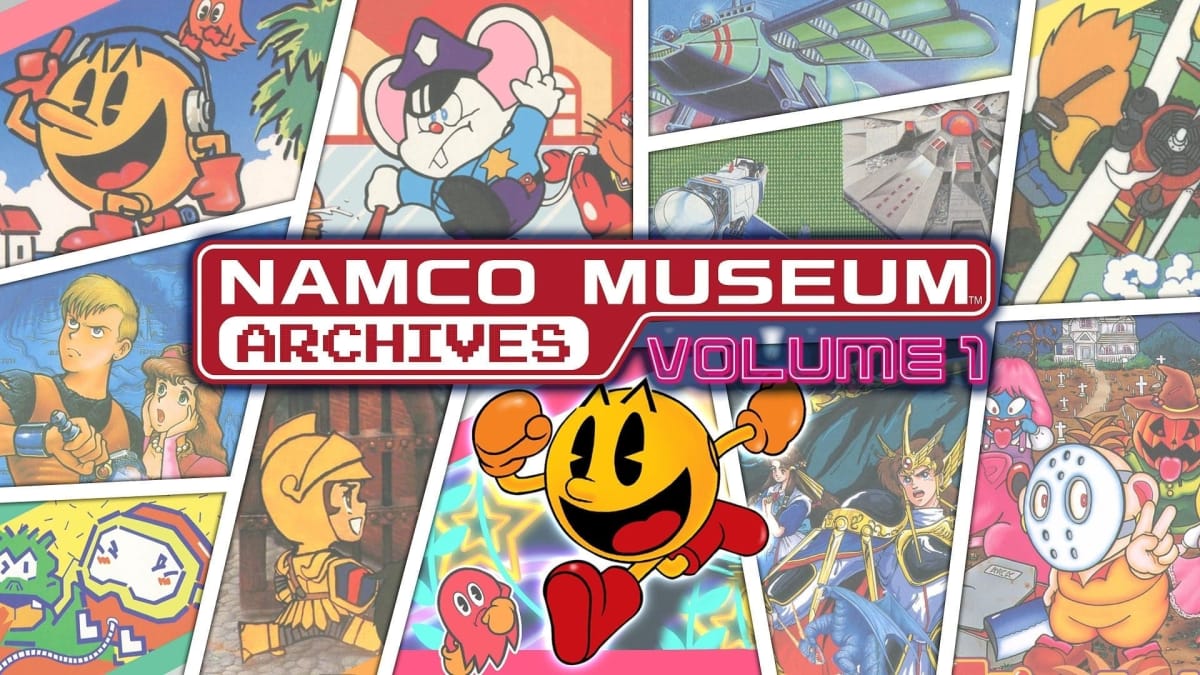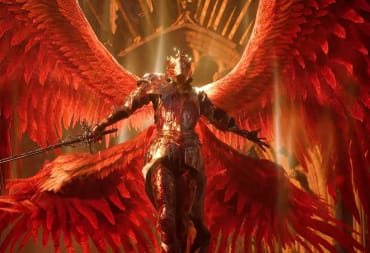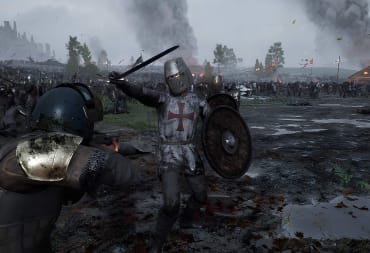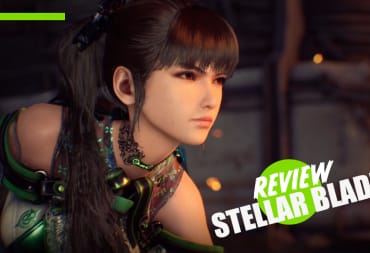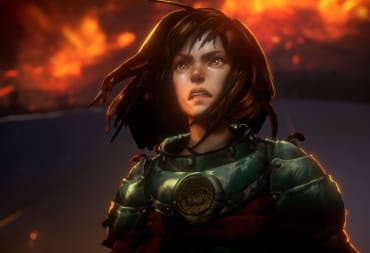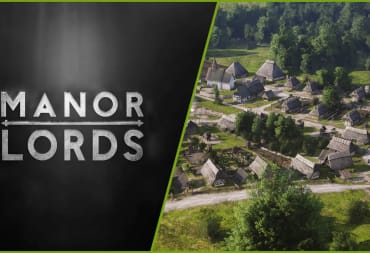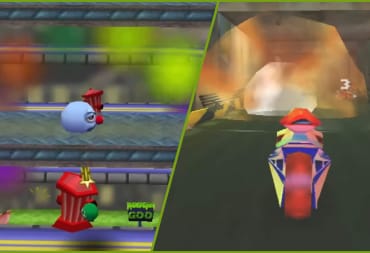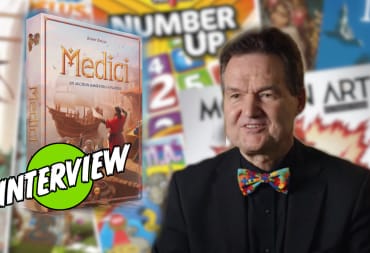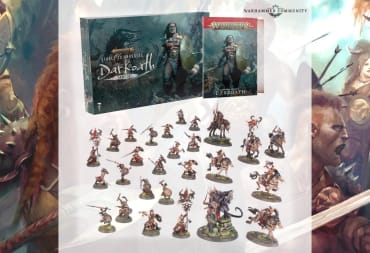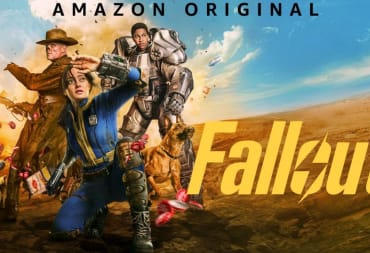So, you're Bandai Namco. You've got a treasure trove of some of the best-known arcade games and also a lot of filler. What do you do? You release Namco Museum and you never stop no matter what. I kid, of course. Bandai Namco is one of the few that seemingly wants to ensure that its legacy stays just as alive as the anime games it currently publishes. That tradition continues with Namco Museum Archives, a two-volume set of NES conversions of the classics you probably already own in another collection.
Unlike some past collections, the Museum Archives doesn't have a lot in the way of menus or bonus features. For $20, you merely get a good helping of 8-bit arcade action. That may not be worth it to some, but the one bonus they do have is a pair of NES-style remakes of newer games. So, if you end up needing a Pac-Man fix and want to explore the rest of the collection, here's a brief overview of each title in the collection and how it holds up in 2020.
The Best
Pac-Man
You know you're doing something when right when a game you put out starts a whole new genre. Maze games were a craze specifically because of Pac-Man, a game that swept the nation. There is Pac-Man pop music and a Pac-Man Christmas special and more Pac-Man merchandise than you can fit in a power pellet. There's a good reason for all of that. Even all these years later, Pac-Man is one of the best games of its era, an addictive high score chase with deceptively simple enemy ghosts and a satisfying gameplay loop.
The NES version of Pac-Man is a surprisingly faithful rendition of the classic, with the only major difference being the music and sound effects. The pitch is slightly lower than normal, something I didn't initially recall from my childhood but instantly identified as I loaded up the game. While the arcade version is a bit more graphically impressive, this is still Pac-Man, and Pac-Man is good.
Xevious
While Pac-Man is a game that most anyone knows, Xevious is just as influential in the world of shoot 'em ups. For Namco, it's basically the evolutionary step between the fast-paced but still stationary action of Galaga and the sprawling vertical shooters that would take over just a few years later. You fire at ships that often look like geometric shapes, both in the air and on the ground below. The action never strays into bullet-hell territory, making it a game that's fun to master even decades on from its original release.
What's interesting about the Namco Museum Archives release is that it's not technically a straight port of the 8-bit version. This edition of Xevious comes with "turbo" baked in, letting you hit the extra buttons on your modern controller to spit out a continual stream of bullets. While this is a bit more than what was intended originally, it helps make the game feel modern. Considering that loads of players had the NES Advantage back in the day as well, it's not too far out of the realm of what was possible in the '80s.
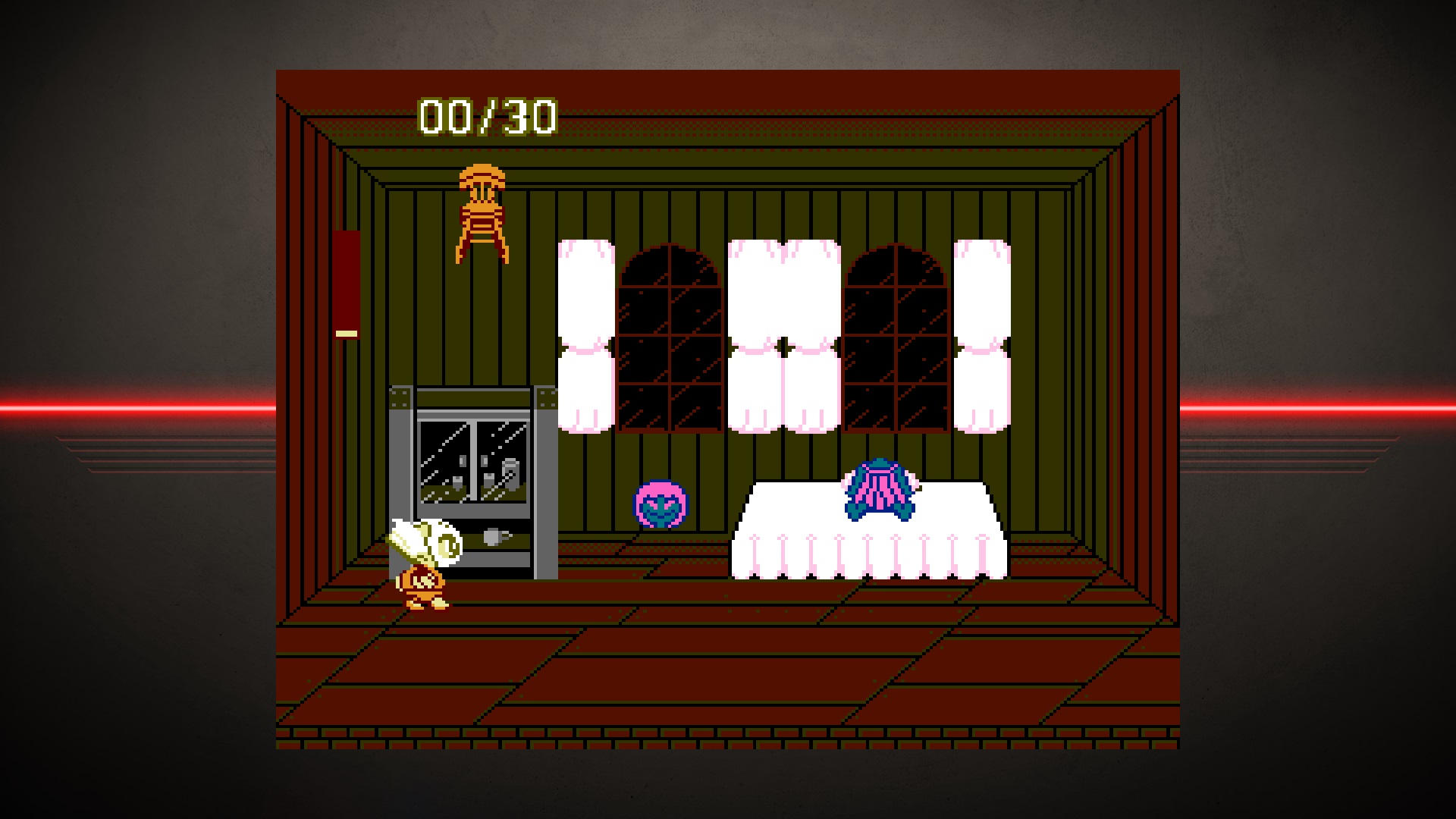
Splatterhouse: Wanpaku Graffiti
Another gem in this collection, Splatterhouse: Wanpaku Graffiti is a previously Japan-only (the name gives that away) action game spoof of the otherwise serious Splatterhouse games. Each character is super-deformed, mixing the gore the original side-scrolling action series with a cartoony presentation. You still play as Rick, and you're still trying to save your girlfriend from all manner of horrors, but playing through the stages gives you a crash course in goofy Japanese humor that's fascinating to revisit.
For example, before the first boss attacks you, it summons a quartet of minions and breaks out into a full dance number that's supposed to resemble Michael Jackson's "Thriller." You don't join in on the dance, you can't attack while he's dancing, you just get to watch the show while you wait for him to initiate the fight. It's something that would never happen in a game today without some warning, so it was a welcome surprise that achieved its goal of amusement.
The gameplay isn't spectacular, but it gets the job done. Interestingly, the turbo controls work in Splatterhouse, letting you swing your ax pretty much all the time if you like. That's most useful as you deal with the platforming, which often expects you to time jumps out and instantly attack a foe on the other end of a pit. The developers probably knew what they were doing here.
Dragon Spirit: The New Legend
Dragon Spirit: The New Legend, a vertical shooter from 1989, is not an arcade port. It borrows heavily from 1987's Dragon Spirit, but it remixes a lot of the gameplay to better suit a home console version. Because of this and the included Turbo option in the controls, New Legend really holds up. There are even cutscenes and story beats, which is pretty ahead of its time for an overhead shmup of this vintage. It's nothing you're going to retain for long, but it's a nice setup for the game to come.
You play as a dragon shooting down various creatures with interesting attack patterns. Some swoop down at you Galaga-style, some try to box you in with shots, and some just dash down to the ground. Like Xevious before it, you can shoot both ahead of you and below you, and powerups can alter your power by giving you elemental breath or letting you grow a new head. This is one of the arcade games I hadn't tried out before sampling this collection, and it was the one I wanted to really dive into once my initial playthroughs were over and done.
Dig-Dug
Out of the games on this collection, Dig-Dug is a personal favorite. It's a simplistic game, a reverse Pac-Man where you're hunting down monsters at first while staying alert for situations where they're in hot pursuit. Your weapon of choice is an air pump, inflating the poor Pookas and Frygars until they explode in a rain of points. The iconic soundtrack, which only continues when you're moving and halts for dramatic effect when you're on the attack, will be in your head the whole day after a few long sessions.
Dig-Dug also has the distinction of being one of the best conversions from the arcade original in this set. While other games have altered sounds or reduced graphical fidelity, Dig-Dug captures the arcade cabinet's admittedly simple graphics perfectly. Strangely, the mostly forgotten sequel Dig-Dug II is on the second volume of the series, meaning that fans of Taizo Hori will have to grab two games if they want his full adventures on their platform of choice.
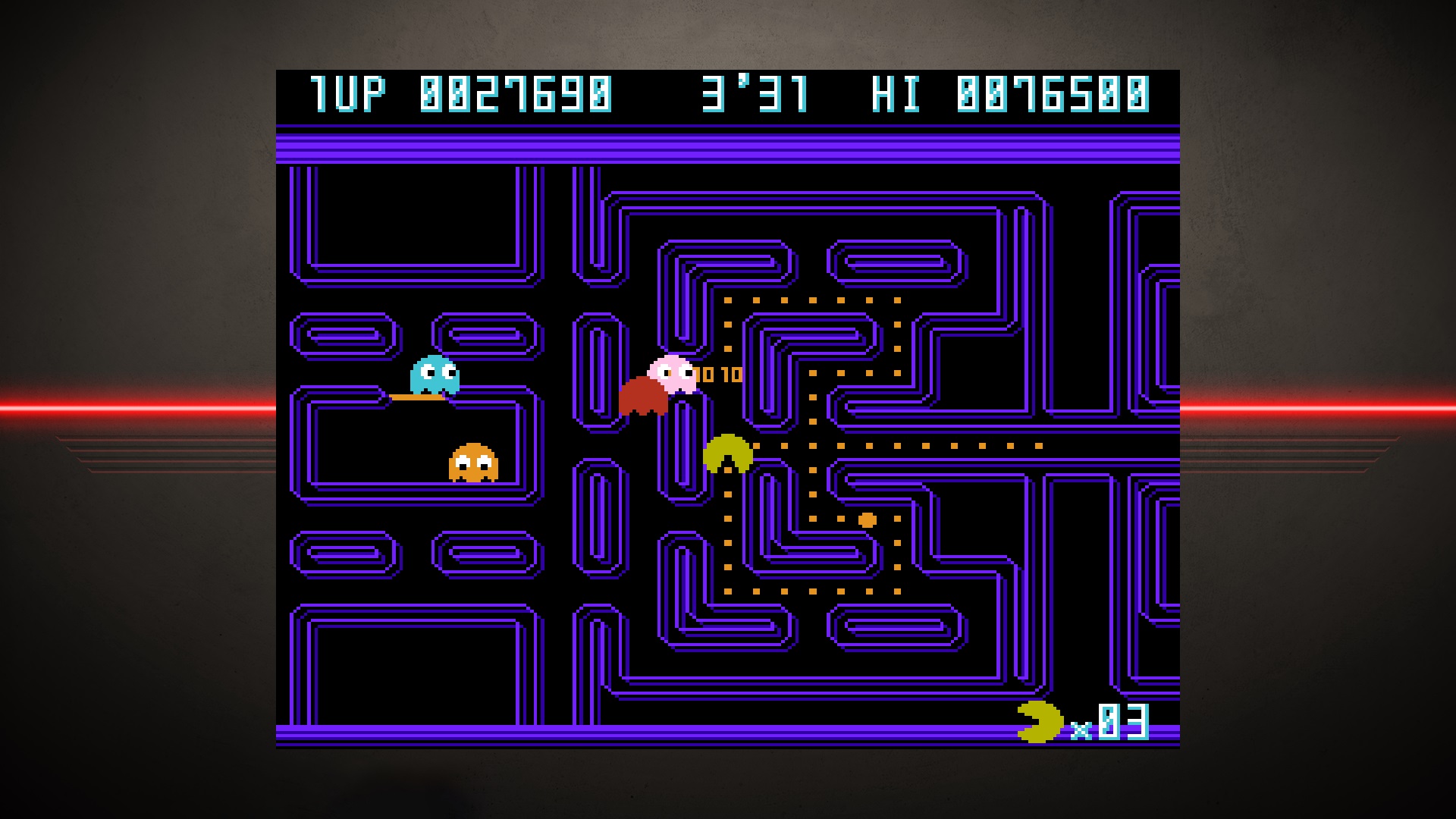
Pac-Man Championship Edition
Rounding out the collection's good games is probably the best out of the set, and it was made this year. The version of Pac--Man Championship Edition included here is a brand new demake of the XBLA original. It includes all the neon you'd expect, in its colorful mazes, just at a lower graphical fidelity. Other than the pixels, the game is remarkably well preserved in its new form. The rules remain the same, with Pac-Man shifting between two sides of a maze and changing things up as he eats fruit. It is undoubtedly better than the original Pac-Man, and its retro stylings may convince me to pick it over the XBLA original in some cases.
I could go on forever, but the game is still Pac-Man at its core, so it's still good. The one feature the blew me away, and perhaps the best thing about this entire release, is how this edition of Championship Edition handles the warp tunnels. In regular Pac-Man, the screen is always static, you just go through the end of one tunnel and come out at the other side. It's worked this way for decades and there's no reason to change it right? Wrong.
In this rendition, the camera scrolls along with Pac-Man through the tunnel. It's not even a stilted scroll like the original Legend of Zelda, it's smooth and keeps up with the speedy gameplay. I'm sure this new feat isn't technically impressive, but it's one of those things that hits you deep in your core. It's like flying the Pelican for the first time in Halo 4 or getting to play as Goro in Mortal Kombat Trilogy. It's like opening a door you never realized existed in the first place and suddenly having access to the forbidden. It's been days since I first played this game and I'm still thinking about how such a little shift in a legendary game can thrill so much.
In short, Pac-Man is still good, but Pac-Man Championship Edition is revolutionary.
The Worst
Mappy
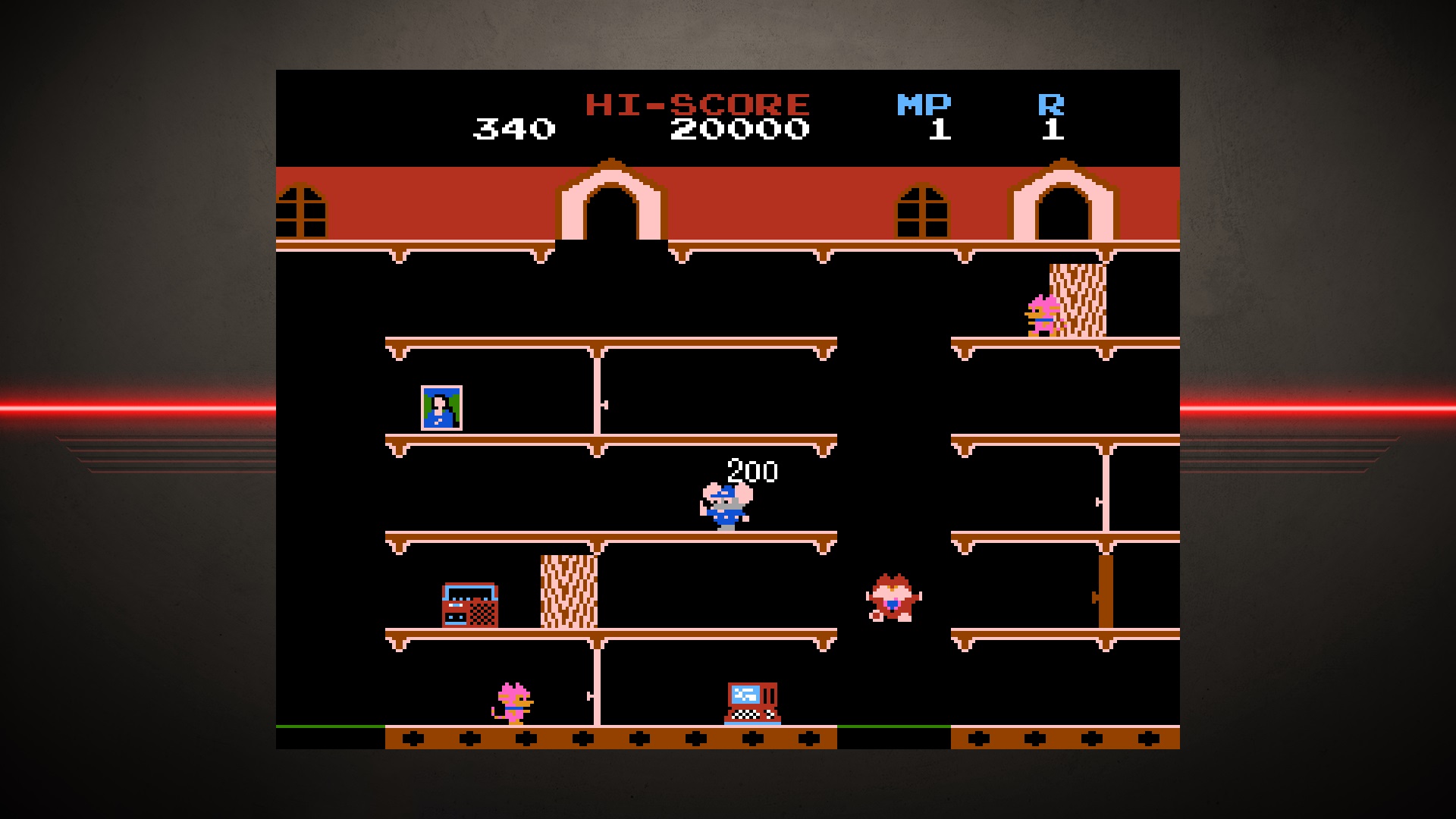
You can't help but feel bad for Mappy. He's the Namco mascot that's popular enough to stick in the memory of arcade players everywhere, but not popular enough to get endless callbacks, reimaginings, and remakes. This might have something to do with the gameplay, which took the then-new mechanics of side-scrolling platforming and how far we've come in the 35 intervening years.
Mappy is a mouse cop who's recovering loot stolen by a gang of cats. He navigates their presumed hideout via trampolines, with the player holding the jump button to go higher as they leap into the air. Mappy can't attack directly, but he can lock the pursuing Meowkies out by closing doors on them. Some doors emit a microwave that blasts cats back, but that's the only powerful tool in your arsenal.
The rest is all about navigation in a vein similar to Burger Time, but you'll quickly wish you had another way of dealing with enemies that swarm you at a moment's notice. Movement, especially the jumping, feels imprecise, and the screen is often busy enough to confuse in this visually downgraded NES version. This does play like Mappy, but maybe that's part of the problem.
Sky Kid
I will give Sky Kid credit for its ingenuity. While this horizontal shooter from 1985 lets you take down enemies in a rain of bullets, your main objective is to bomb a building at the end of your run. In addition, you have to actually pick up a bomb from a waystation on your way to the target. It makes the game more about survival than high score chasing, so it's a nice change of pace from some of the games in this collection. For historical purposes, it's also the first Namco game to offer two-player co-op play, and that's replicated here if you have a retro-minded friend.
Unfortunately, Sky Kid's novel design doesn't shield it from the fact that it's juggling too much at once. Achieving a perfect run is a great goal hampered by unwieldy controls and an autoscrolling background that's often going faster than you'd like. The levels also get pretty repetitive since the goal for each level stays similar. It's a complaint you can level against a lot of games this era, but it sticks out here because of how many moving parts there are to the objective. It's certainly worth a look because of how unique it is in Namco's catalog, but you'll bail after a few runs.
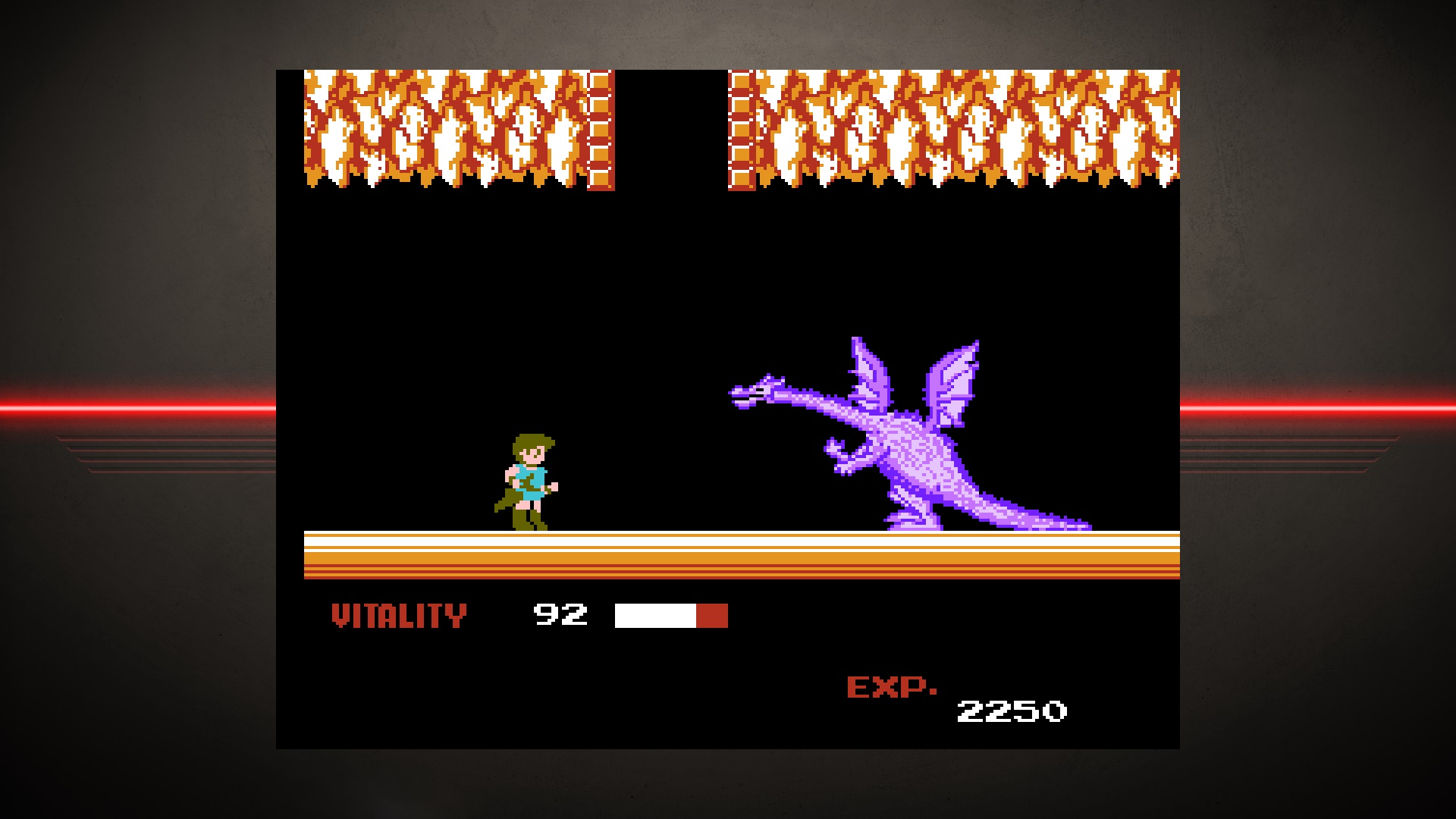
Dragon Buster
Of the two "dragon" games in the Namco Museum Archives Vol. 1, this game is the one that aged poorly. Dragon Buster is in the realm of Link's Adventure, a side-scrolling action game without a lot in the way of variety in your moves. The game impressed thanks to the innovation of double jumping, which is historically interesting but doesn't help me want to play it in 2020.
The sprites are pretty large for an NES game, but that doesn't mean they're detailed. The lumbering characters feel slow as you plod forward, and swinging your sword is anemic compared to other games, even some of its contemporaries. While you can have fun for a few minutes trying to decipher the perfect jump arc during the admittedly intense boss fights, you'll likely retreat back to more arcadey fare before too long.
Galaxian
Outside of Pac-Man, Namco's most popular arcade game is likely Galaga, the space shooter that anchors the other volume of Namco Museum Archives. It's so big that many don't realize that it's a sequel to an earlier Namco classic. Said game is Galaxian, a game that was integral to the evolution of its developer but doesn't hold up well nowadays. Part of that is due to its age. Galaxian released just one year after Taito's Space Invaders, and it shows that clone games existed long before the rise of the mobile market.
This is a slow-paced space shooter compared to its successor, only letting you shoot single shots at a squadron of foes that sways back and forth. Enemies do swoop down at you, something that would become a staple of the series, but everything feels slowed to a crawl compared to what players might be expecting. Your shots can easily blast through the squadron without hitting anything, and dying means starting the level all the way over. It all adds up to an experience that's best forgotten, putting it in prime company with other misfired prequels to classic games like Burnout 2 and Capcom's original Street Fighter.
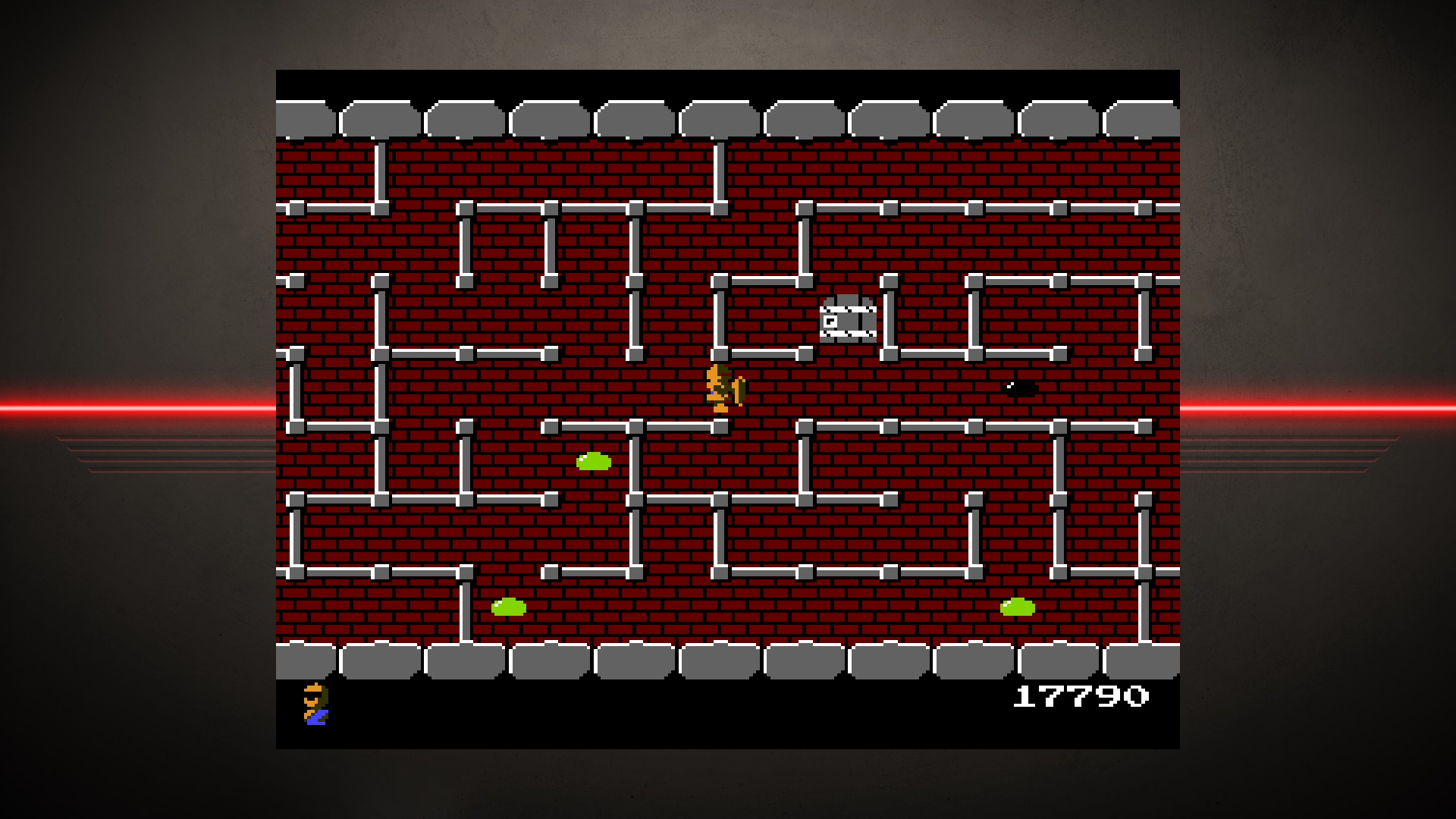
The Tower of Duraga
If I ever achieve the impossible dream of living a life as a Japanese child during the 1980s arcade boom, I may find appreciation for The Tower of Duraga. This is a game that reflects a certain period of time more than most, an influential title that showed Japan how dense a game could be. Unfortunately, due to the game's late American port, the legend of Duraga never took hold on our shores.
Gameplay-wise, Duraga was outdated a few years after release, and it feels absolutely ancient now. A dungeon crawler that looks like Gauntlet, you play a warrior trying to avoid enemies, grab keys, and exit to the next stage. There are secret items scattered around the dungeon that let you perform other tasks and eventually move to deeper depths. At the time, any form of nonlinearity was mind-blowing, but I'd get more excitement reading about the complexities nowadays than trying to puzzle them out.
It's also worth noting the understandable but still crazy way you slay beasts here. The combat has you pressing a button to stick out your sword before you move into an enemy to slay them. It works like old-school roguelikes, and Duraga is cited as one of the inspirations of that genre as the years go on. However, it's so easy to ram into a slime a millisecond too late and watch as your hero is overtaken by the weakest of all fantasy creatures.
If you have the patience of a saint, you may find fun climbing this tower, but it's not for me.
TechRaptor sampled the games of Namco Museum Archives Vol. 1 on Xbox One X with a copy provided by the publisher.
Have a tip, or want to point out something we missed? Leave a Comment or e-mail us at tips@techraptor.net
